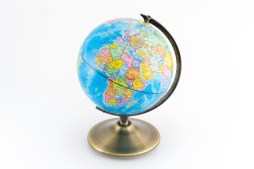The Role of Storytelling in Bridging Cultural Gaps Through Literature
Storytelling has been a fundamental part of human experience across cultures for millennia. Through literature, we gain insight into the beliefs, values, and experiences of people from diverse backgrounds. This article explores how literature serves as a powerful tool for understanding different cultures and fostering empathy among readers.
The Power of Narrative in Cultural Exploration
Literature allows us to step into the shoes of others, experiencing their lives through the lens of narrative. Whether through novels, short stories, or poetry, authors weave tales that reflect their cultural realities. By engaging with these narratives, readers can explore unfamiliar customs and traditions while also recognizing universal themes that unite humanity.

Empathy Through Characters and Stories
One of the most profound aspects of literature is its ability to cultivate empathy. When we read about characters facing challenges in different cultural contexts—whether it’s navigating identity issues or confronting societal norms—we begin to understand their struggles on a personal level. This emotional connection enables us to appreciate cultural differences rather than judge them from our own perspectives.
Literature as a Reflection of Society
Every piece of literature offers insights into the social dynamics and historical events shaping its culture. For instance, works like Chinua Achebe’s “Things Fall Apart” provide a glimpse into Nigerian society pre-colonization while addressing themes like colonialism’s impact on indigenous cultures. These reflections invite discussions about power structures and social change within various contexts.
Cross-Cultural Literature: A Gateway to Dialogue
With globalization, cross-cultural literature has emerged as a vital medium for dialogue among communities worldwide. Translated works allow readers access to foreign narratives that broaden their horizons beyond local histories and experiences. Books by authors such as Haruki Murakami or Chimamanda Ngozi Adichie encourage conversations about identity and belonging across borders.
The Role of Education in Promoting Cultural Understanding
In educational settings, incorporating diverse literary works can enhance students’ understanding of global cultures. By analyzing texts from varied perspectives, students develop critical thinking skills while learning respect for diversity. Programs centered around multicultural reading lists can create inclusive environments that celebrate differences through storytelling.
In conclusion, literature is not just an art form; it is an essential tool for promoting cultural understanding and empathy among individuals from varied backgrounds. By engaging with stories from around the world, we can bridge cultural gaps and foster connections that transcend boundaries.
This text was generated using a large language model, and select text has been reviewed and moderated for purposes such as readability.











